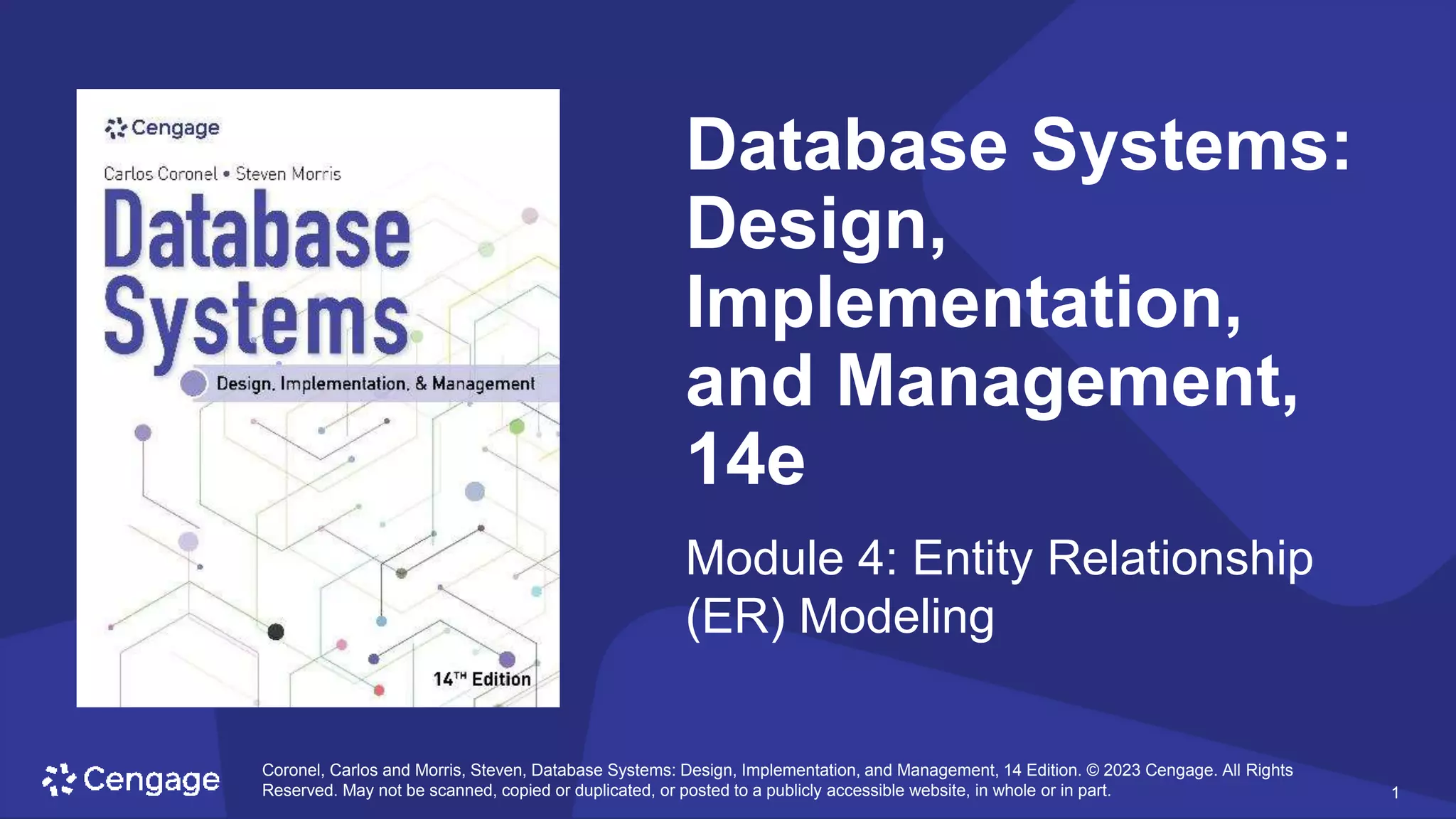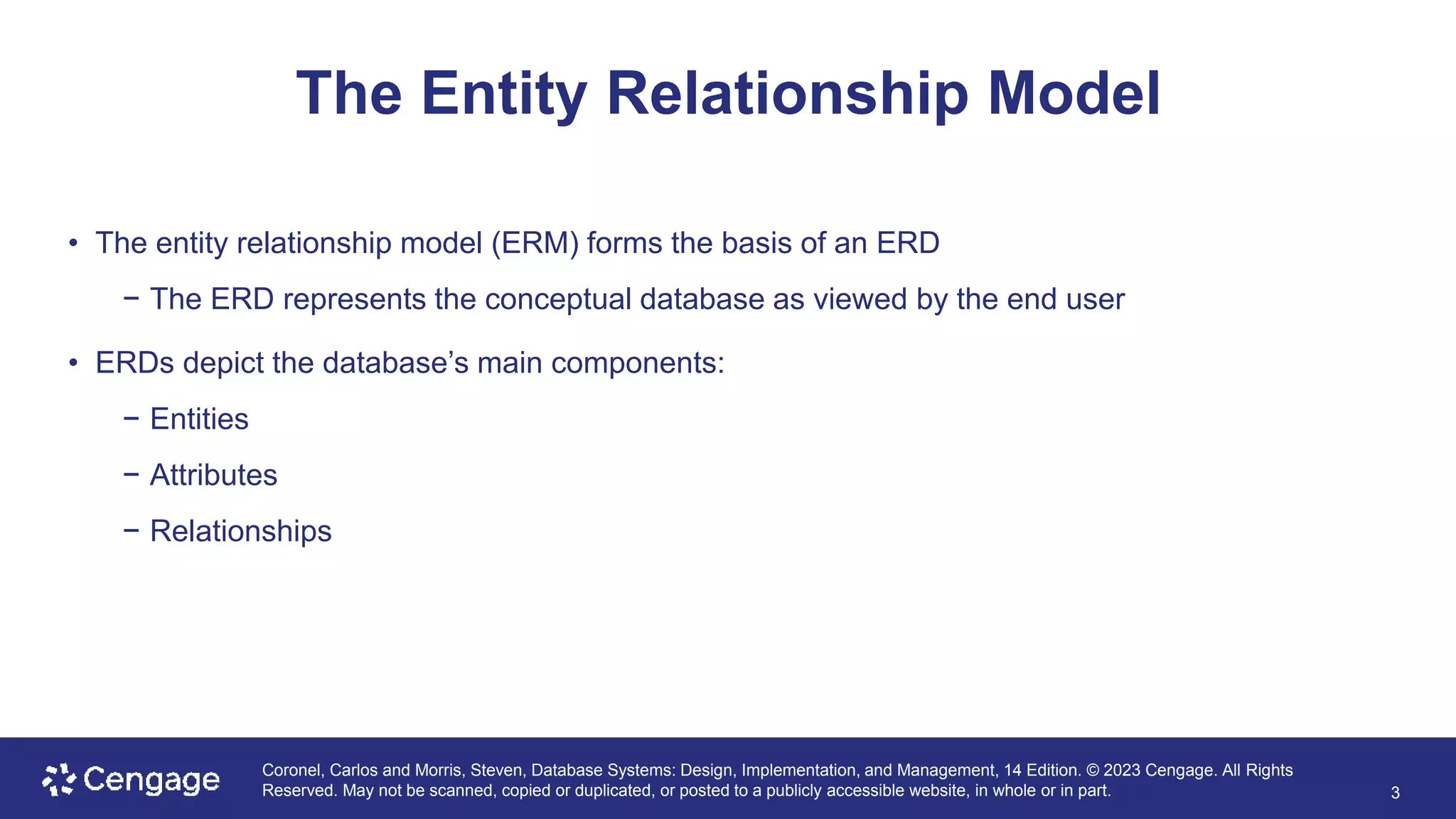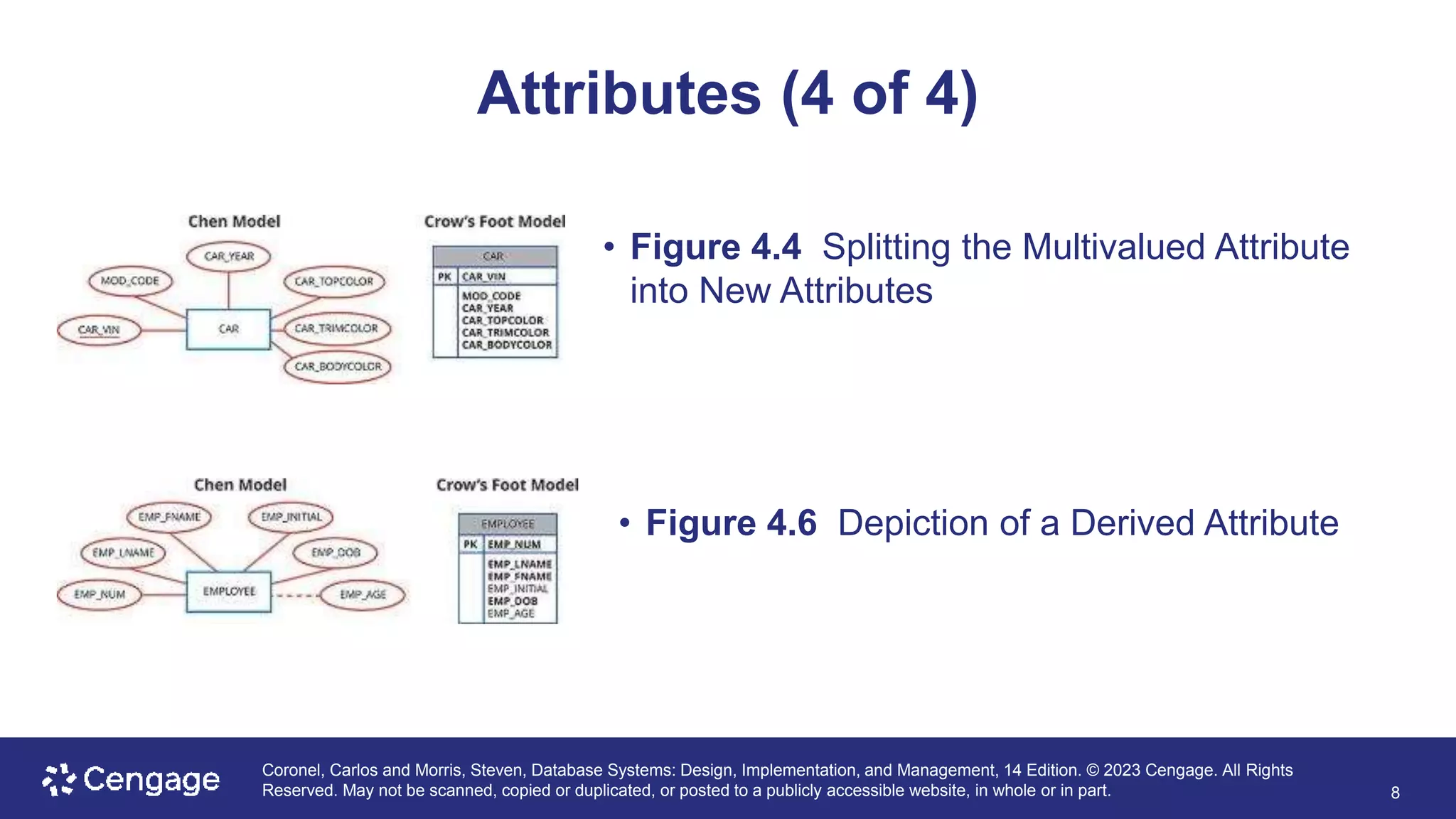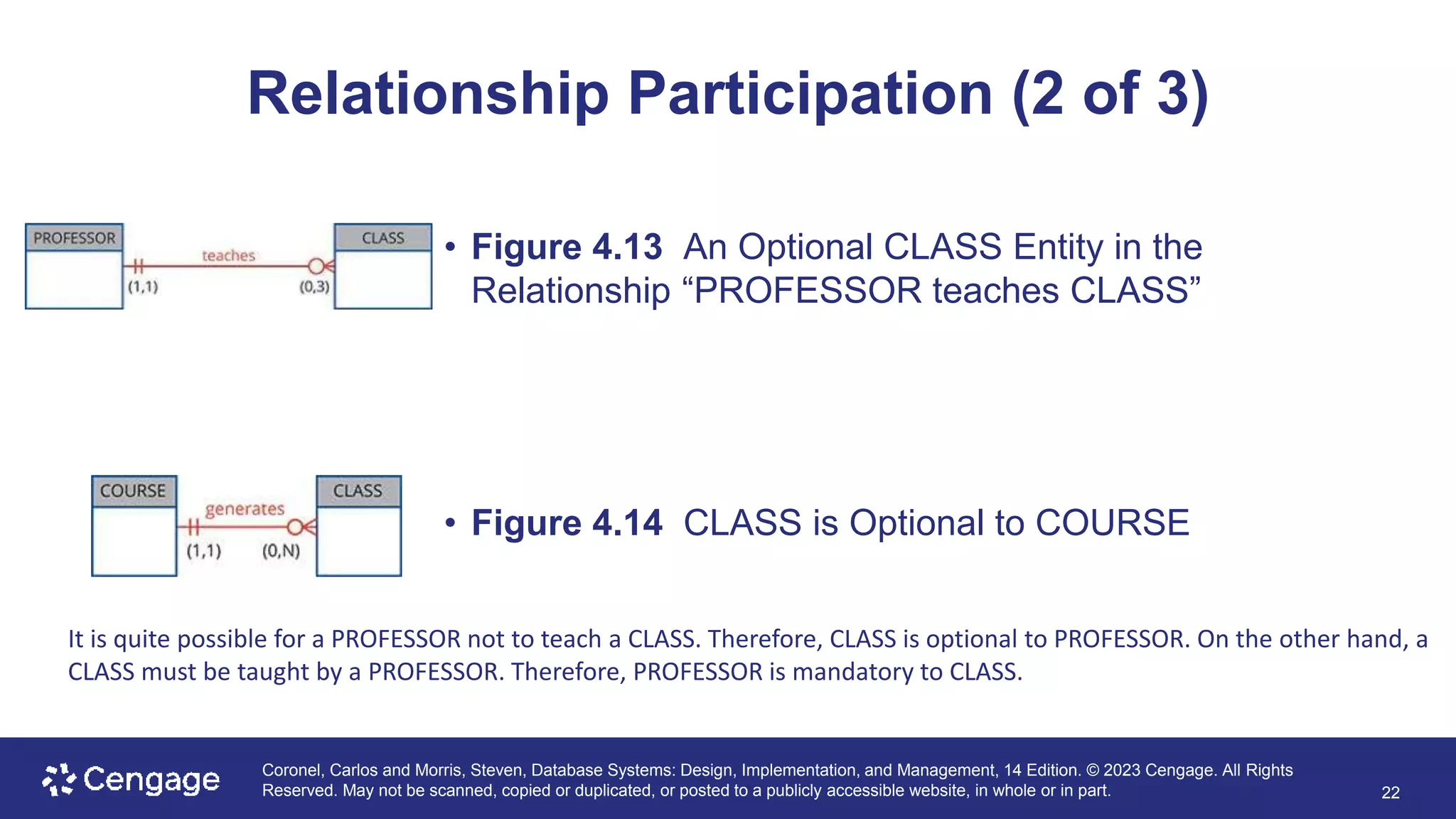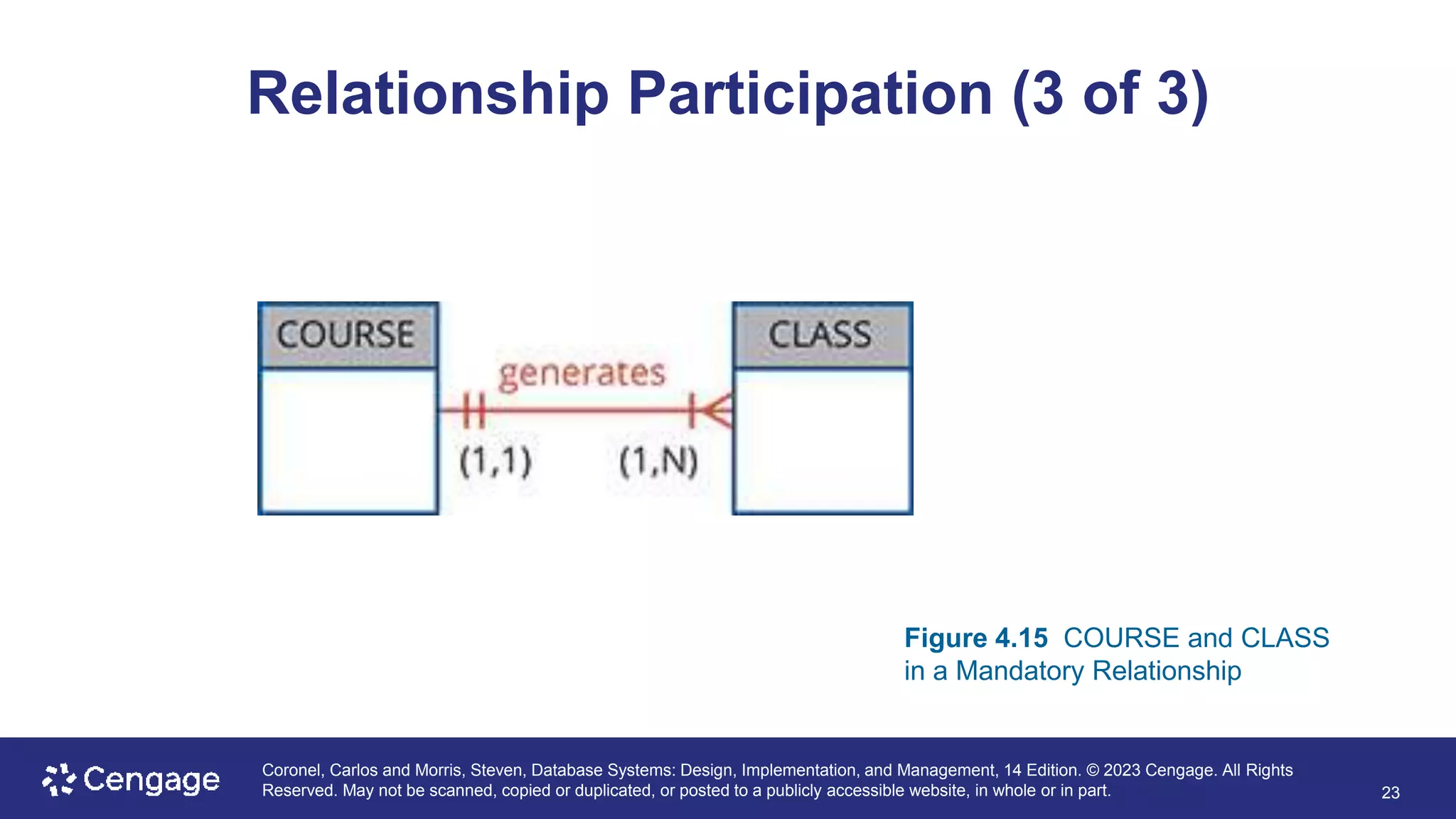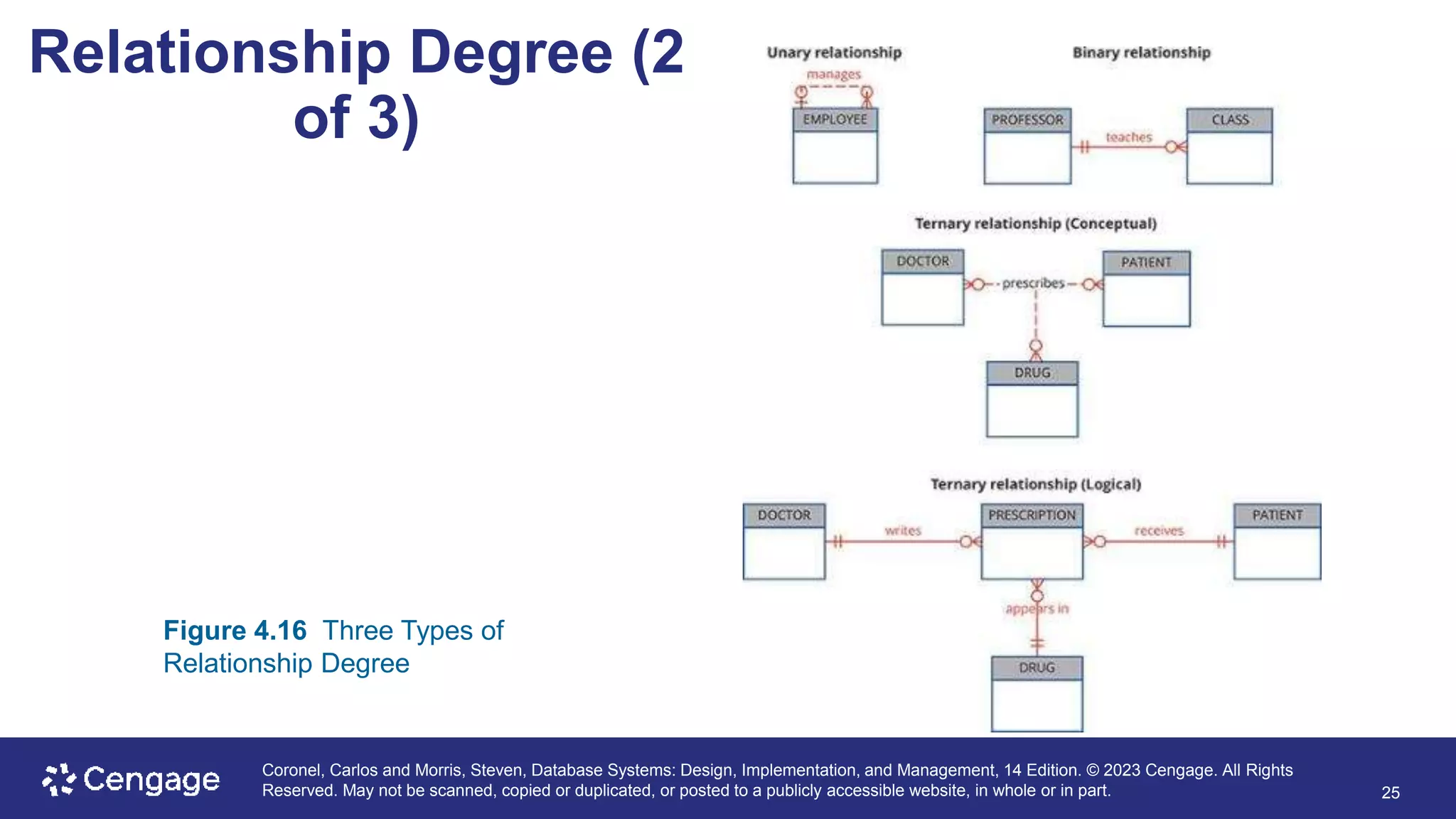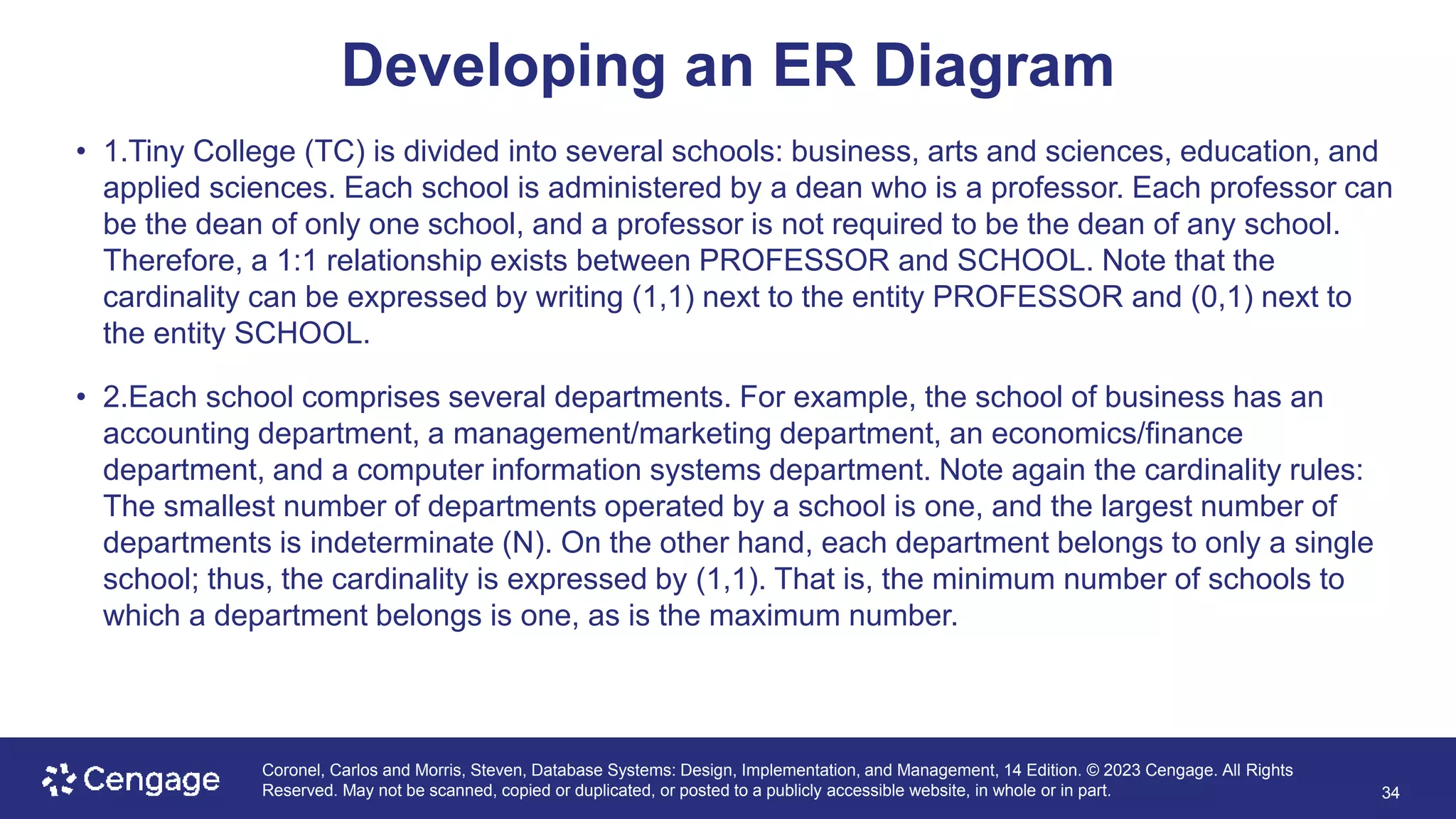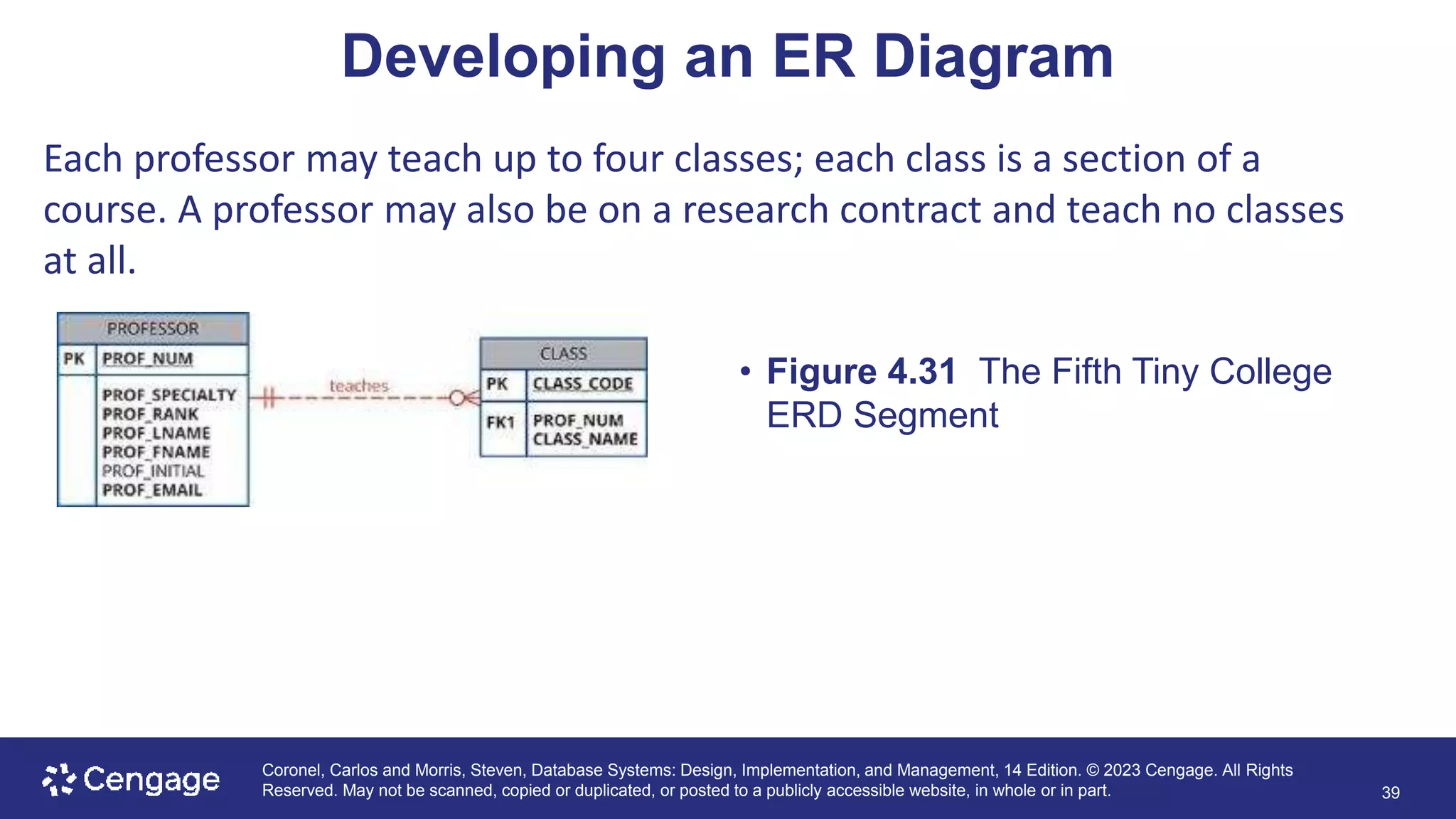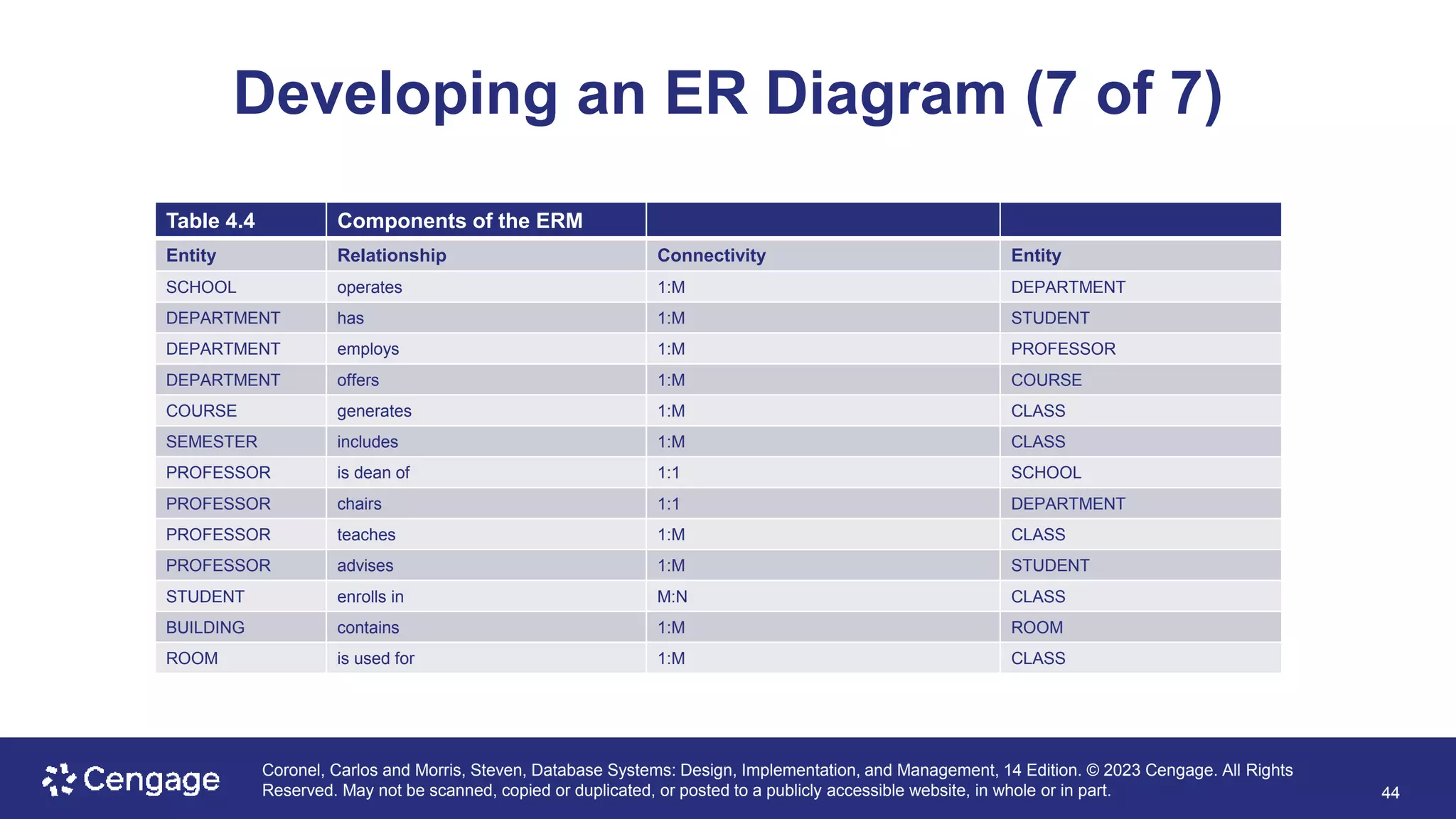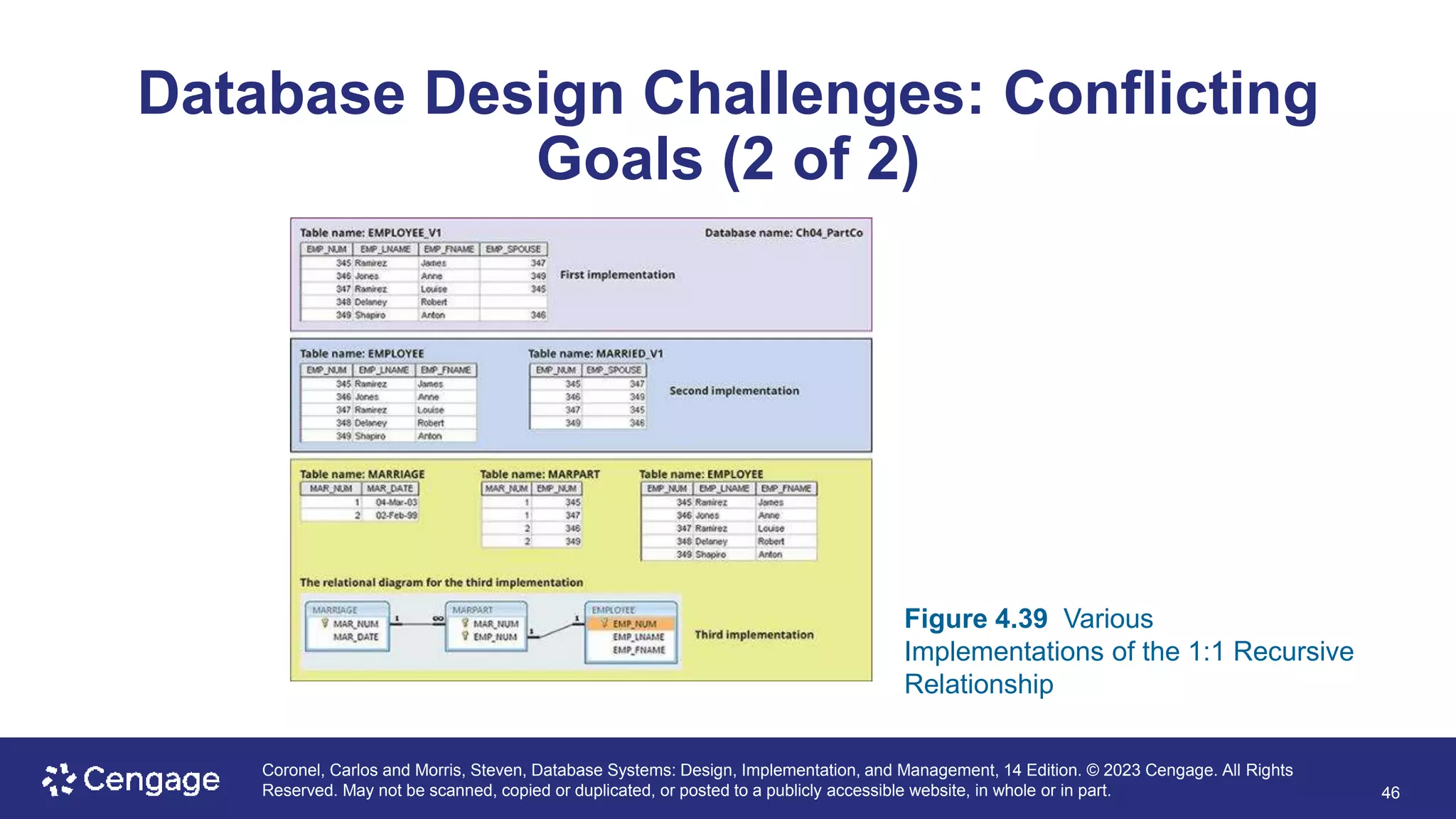This document discusses entity relationship modeling and describes its key components - entities, attributes, and relationships. It defines entities as objects of interest to users, with each entity corresponding to a database table. Attributes are characteristics of entities and include identifiers, single-valued and multi-valued attributes. Relationships connect entities and are defined by connectivity, cardinality, and whether they are identifying or non-identifying. The document provides examples and diagrams to illustrate these entity relationship modeling concepts.
